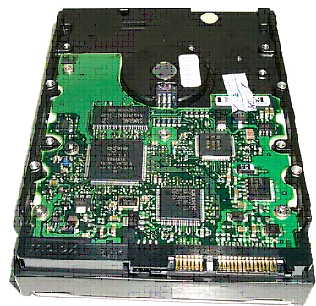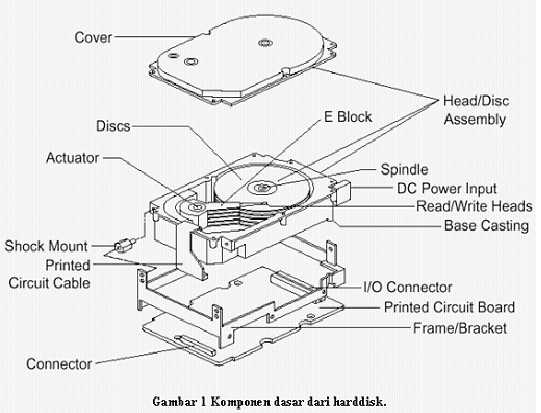| Height | Width | Depth | Volume |
|---|---|---|---|
| 5 1/4" Drives | |||
| 3.25" (82.6mm) | 5.75" (146.0mm) | 8" (203.2mm) | 149.5 ci (2449.9 cc) |
| 5 1/4" Half-Height Drives | |||
| 1.63" (41.3mm) | 5.75" (146.0mm) | 8.00" (203.2mm) | 74.8 ci (1224.9 cc) |
| 3 1/2" Half-Height Drives | |||
| 1.63" (41.3mm) | 4" (101.6mm) | 5.75" (146.0mm) | 37.4 ci (612.5 cc) |
| 3 1/2" 1/3-Height Drives | |||
| 1.00" (25.4mm) | 4" (101.6mm) | 5.75" (146.0mm) | 23.0 ci (376.9 cc) |
| 2 1/2" Drives | |||
| 19.0mm (0.75") | 70.0mm (2.76") | 100.0mm (3.94") | 133.0 cc (8.1 ci) |
| 17.0mm (0.67") | 119.0 cc (7.3 ci) | ||
| 12.7mm (0.50") | 88.9 cc (5.4 ci) | ||
| 12.5mm (0.49") | 87.5 cc (5.3 ci) | ||
| 9.5mm (0.37") | 66.5 cc (4.1 ci) | ||
| 8.5mm (0.33") | 59.5 cc (3.6 ci) | ||
| 1.8" Drives | |||
| 9.5mm (0.37") | 70.0mm (2.76") | 60.0mm (2.36") | 39.9 cc (2.4 ci) |
| 7.0mm (0.28") | 29.4 cc (1.8 ci) | ||
| 1.8" PC Card Drives | |||
| 8.0mm (0.31") | 54.0mm (2.13") | 78.5mm (3.09") | 33.9 cc (2.1 ci) |
| 5.0mm (0.20") | 21.2 cc (1.3 ci) | ||
| 1" MicroDrives | |||
| 5.0mm (0.20") | 42.8mm (1.69") | 36.4mm (1.43") | 7.8 cc (0.5 ci) |
| The first figure listed for each dimension is the dimension on which the standard is based, the second one is derived through a conversion. Some standards are based on SAE (English) measurements, whereas others are based on SI (metric) measurements. | |||
5 1/4" Drive
Shugart Associates first introduced the 5 1/4" form factor along with the first 5 1/4" floppy drive in 1976. The story goes that founder Al Shugart then left that company and founded Seagate Technologies, which introduced the first 5 1/4" (Model ST-506, 5MB capacity) hard disk in 1980, predating the IBM PC. IBM later used the Seagate ST-412 (10MB) drive in some of its PC-XT models, which were among the first PCs to be sold with hard drives built in. The physical format of the 5 1/4" hard disk back then was the same as the 5 1/4" full-height floppy drive, so both fit the same size bay in a chassis. For example, the original IBM PC and XT models had two 5 1/4" full-height bays that could accept these drives. The first portable systems (such as the original Compaq Portable) used these drives as well. Later, the 5 1/4" form factor was reduced in height by one-half when the appropriately named 5 1/4" half-height floppy drives and hard drives were introduced. This allowed two drives to fit in a bay originally designed for one. The 5 1/4" half-height form factor is still used as the form factor for modern desktop CD-ROM and DVD drives and is the standard form factor for larger drive bays in all modern desktop PC chassis. Early portable PCs, such as the IBM Portable PC, used this form factor as well.3 1/2" Drive
Sony introduced the first 3 1/2" floppy drive in 1981, which used a smaller width and depth but the same height as the half-height 5 1/4" form factor. These were called 3 1/2" half-height drives, even though there was no such thing as a "full-height" 3 1/2" drive. Rodime followed with the first 3 1/2" half-height hard disk in 1983. Later 3 1/2" floppy and hard drives would be reduced in height to only 1", which was just under one-third of the original 5 1/4" full-height form factor (these were sometimes called 1/3-height drives). Today, the 1" high version has become the modern industry-standard 3 1/2" form factor.2 1/2" Drive
PrairieTek introduced the 2 1/2" form factor in 1988, which proved to be ideal for laptop and notebook computers. As laptop sales grew, so did sales of the 2 1/2" drives. Although PrairieTek was the first with that form factor, other drive manufacturers quickly capitalized on the market by also introducing 2 1/2" drives. Finally, in 1994 Conner Peripherals, Inc., paid $18 million for PrairieTek's 2 1/2" disk drive technology and PrairieTek went out of business. Since the 2 1/2" drives first appeared, virtually all laptop and notebook systems have used them. Although 2 1/2" drives can also be used in desktop systems, the 3 1/2" drive continues to dominate the desktop market due to greater capacity and speed and lower cost.The 2 1/2" drives have been manufactured in various thicknesses (or heights), and many notebook or laptop systems are restricted as to how thick a drive they can support. Here are the common thicknesses that have been available:
- 8.5mm
- 9.5mm
- 12.5mm
- 12.7mm
- 17.0mm
- 19.0mm
1 and 8" Drive
The 1 and 8" drive was first introduced by Integral Peripherals in 1991 and has had problems gaining acceptance in the marketplace ever since. This size was initially created because it fit perfectly in the PC Card (PCMCIA) form factor, making it ideal as add-on removable storage for laptop and notebook systems. Unfortunately, the 1.8" drive market has been slow to take shape, and in 1998 an investment group called Mobile Storage bought Integral Peripherals' 1.8" drive technology for $5.5 million; Integral Peripherals then went out of business. Several other companies have introduced 1.8" drives over the yearsmost notably HP, Calluna, Toshiba, and Hitachi. Of those, only Toshiba and Hitachi continue to manufacture drives in that format. HP exited the disk drive market completely in 1996, and Calluna finally ceased operation in 2001. Toshiba introduced its 1.8" drives (available in the physical format of a Type II PC-Card) in 2000, and Hitachi entered the 1.8" drive market in 2003. The 1.8" drives are available in capacities of up to 60GB or more and, depending on the model, can be used anywhere a standard PC Card can be plugged in.1" Drives
During 1998, IBM introduced a 1" drive called the MicroDrive, incorporating a single platter about the size of a quarter! Current versions of the MicroDrive can store up to 4GB or more. These drives are in the physical and electrical format of a Type II Compact Flash (CF) card, which means they can be used in almost any device that takes CF cards, including digital cameras, personal digital assistants (PDAs), and MP3 players. IBM's disk drive division was sold to Hitachi in 2003 and combined with Hitachi's storage technology business as Hitachi Global Storage Technologies.Note
HP introduced a 20MB 1.3" disk drive called the KittyHawk in 1992, originally intended for the handheld computer market. In 1994, HP followed with a 40MB model. These small drives were expensive and proved to be too far ahead of their time, as were the handheld computers they were intended for. After two years of low sales, HP discontinued the KittyHawk family.
HP introduced a 20MB 1.3" disk drive called the KittyHawk in 1992, originally intended for the handheld computer market. In 1994, HP followed with a 40MB model. These small drives were expensive and proved to be too far ahead of their time, as were the handheld computers they were intended for. After two years of low sales, HP discontinued the KittyHawk family.
Hard Disk
Hard disk merupakan salah satu media penyimpan data pada komputer yang terdiri dari kumpulan piringan magnetis yang keras dan berputar, serta komponen-komponen elektronik lainnya. Hard disk menggunakan piringan datar yang disebut dengan platter, yang pada kedua sisinya dilapisi dengan suatu material yang dirancang agar bisa menyimpan informasi secara magnetis. Platter-platter tersebut disusun dengan melubangi tengahnya dan disusun pada suatu spindle. Platter berputar dengan kecepatan yang sangat tinggi yang dikendalikan oleh spindle motor yang terhubung pada spindle. Alat elektromagnetik baca tulis khusus yang bernama head terpasang pada slider dan digunakan untuk menyimpan informasi ke dalam piringan atau membacanya. Slider terpasang di atas arm, yang kesemuanya terhubung secara mekanis pada suatu kumpulan tunggal dan tersambung pada permukaan piringan melalui suatu alat yang disebut dengan actuator. Selain itu ada juga logic board mengatur aktifitas komponen-komponen lain dan berkomunikasi dengan PC.
Setiap permukaan pada satu platter bisa menampung sekitar sepuluh milyar bit data yang diorganisasikan pada suatu “potongan” yang lebih besar dengan alasan kemudahan, dan memungkinkan pengaksesan informasi dengan lebih mudah dan cepat. Setiap platter memiliki dua head, satu di atas dan satu lagi di bawah, sehingga hard disk dengan dua platter memiliki empat permukaan dan empat head. Setiap platter menyimpan informasi dalam lingkaran-lingkaran yang disebut dengan track. Kemudian tiap track “dipotong-potong” lagi menjadi beberapa bagian yang disebut dengan sector, yang mana masing-masing sector menampung informasi sebesar 512 bytes.
Seluruh hard disk harus dibuat dengan tingkat presisi yang sangat tinggi karena komponen-komponennya berukuran sangat kecil. Bagian terpenting dari hard disk harus ditempatkan pada suatu tempat yang tidak bisa dimasuki udara untuk memastikan tidak ada benda asing yang masuk dan menempel pada permukaan platter yang bisa menyebabkan kerusakan head.
Platter
Platter (sering disebut juga dengan “disks” atau “discs”) terdiri dari dua bahan: benda padat yang membentuk platter itu sendiri dan zat magnetis yang membungkus platter, yang digunakan untuk menyimpan data. Nama “hard disk” itu sendiri sesungguhnya didapatkan dari sifat platter yang keras jika dibandingkan dengan “platter” yang dimiliki disket (floppy disk) atau media lainnya yang fleksibel.
Platter (sering disebut juga dengan “disks” atau “discs”) terdiri dari dua bahan: benda padat yang membentuk platter itu sendiri dan zat magnetis yang membungkus platter, yang digunakan untuk menyimpan data. Nama “hard disk” itu sendiri sesungguhnya didapatkan dari sifat platter yang keras jika dibandingkan dengan “platter” yang dimiliki disket (floppy disk) atau media lainnya yang fleksibel.
Dikarenakan platter adalah bagian yang digunakan untuk menyimpan data, maka kualitasnya harus benar-benar baik. Tiap permukaan platter benar-benar dibuat dan diperlakukan dengan sangat tepat (melalui mesin tentunya) untuk menghindari cacat, serta hard disk itu sendiri dibuat pada suatu ruangan yang bersih (“clean room”) untuk menghindari partikel-partikel asing menempel pada platter pada saat pembuatannya.
Ukuran dari platter adalah hal utama yang menentukan ukuran hard disk secara keseluruhan, yang juga sering disebut dengan form factor. Setiap hard disk diproduksi dengan berbagai jenis form factor yang standar, diantaranya 5.25-inchi, 3.5-inchi, 2.5-inchi, PC Card dan CompactFlash.
![]()



0 komentar:
Posting Komentar